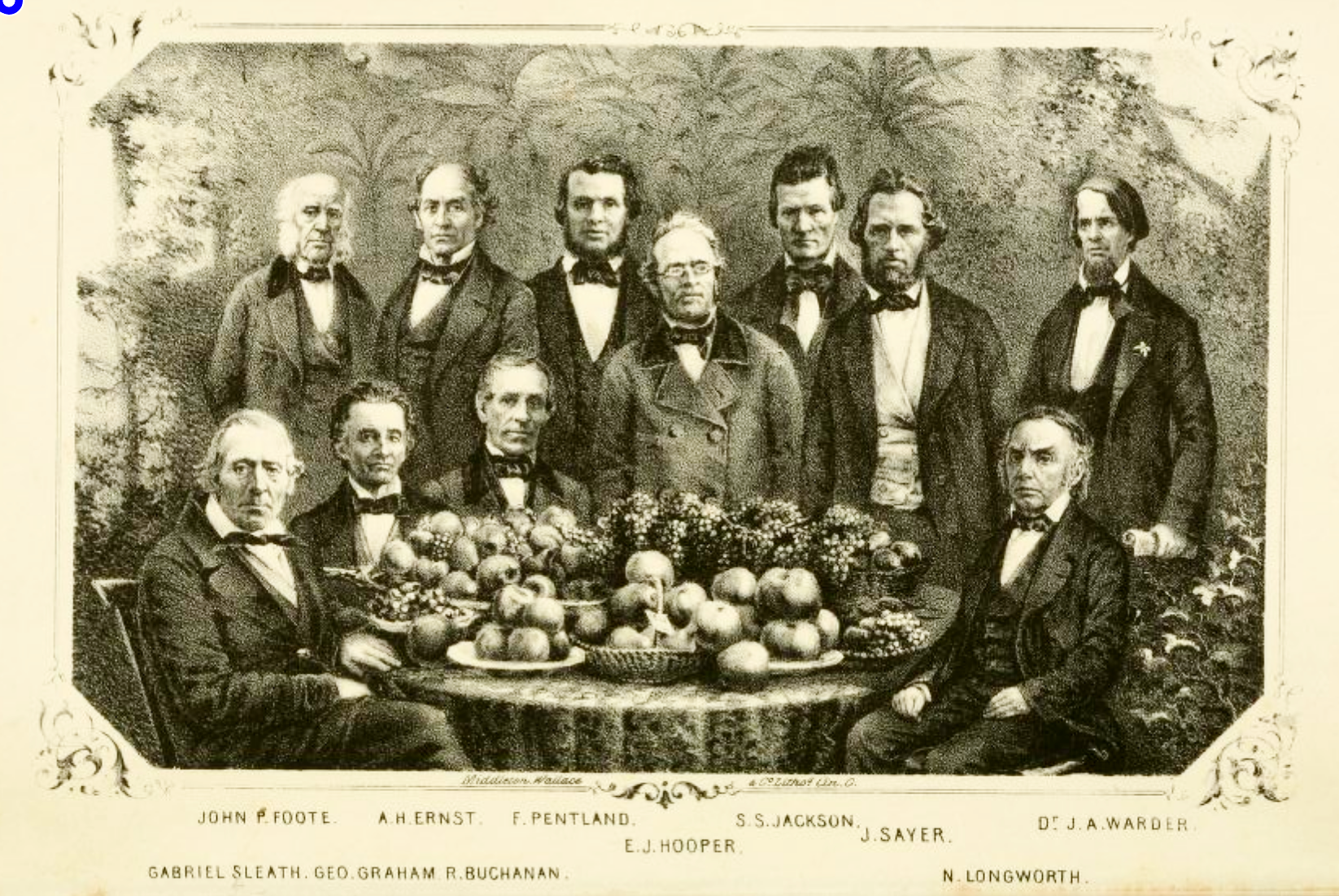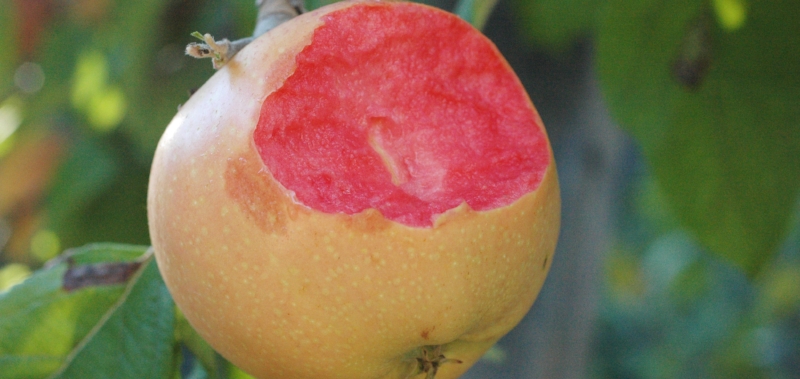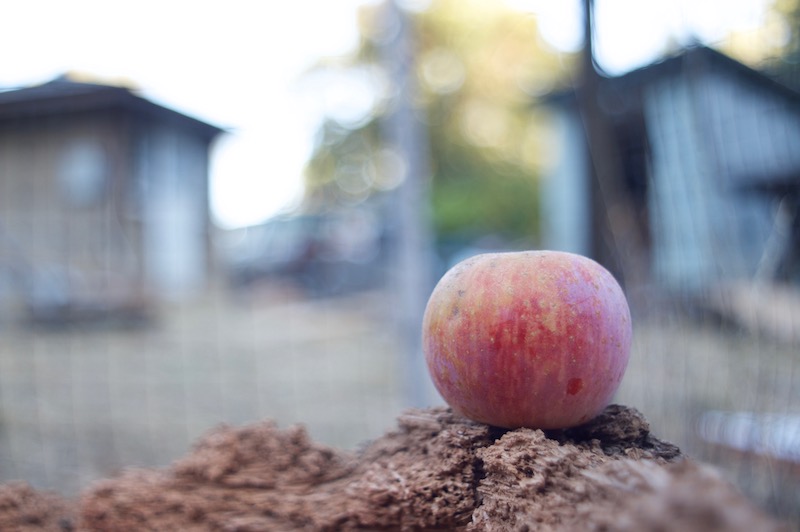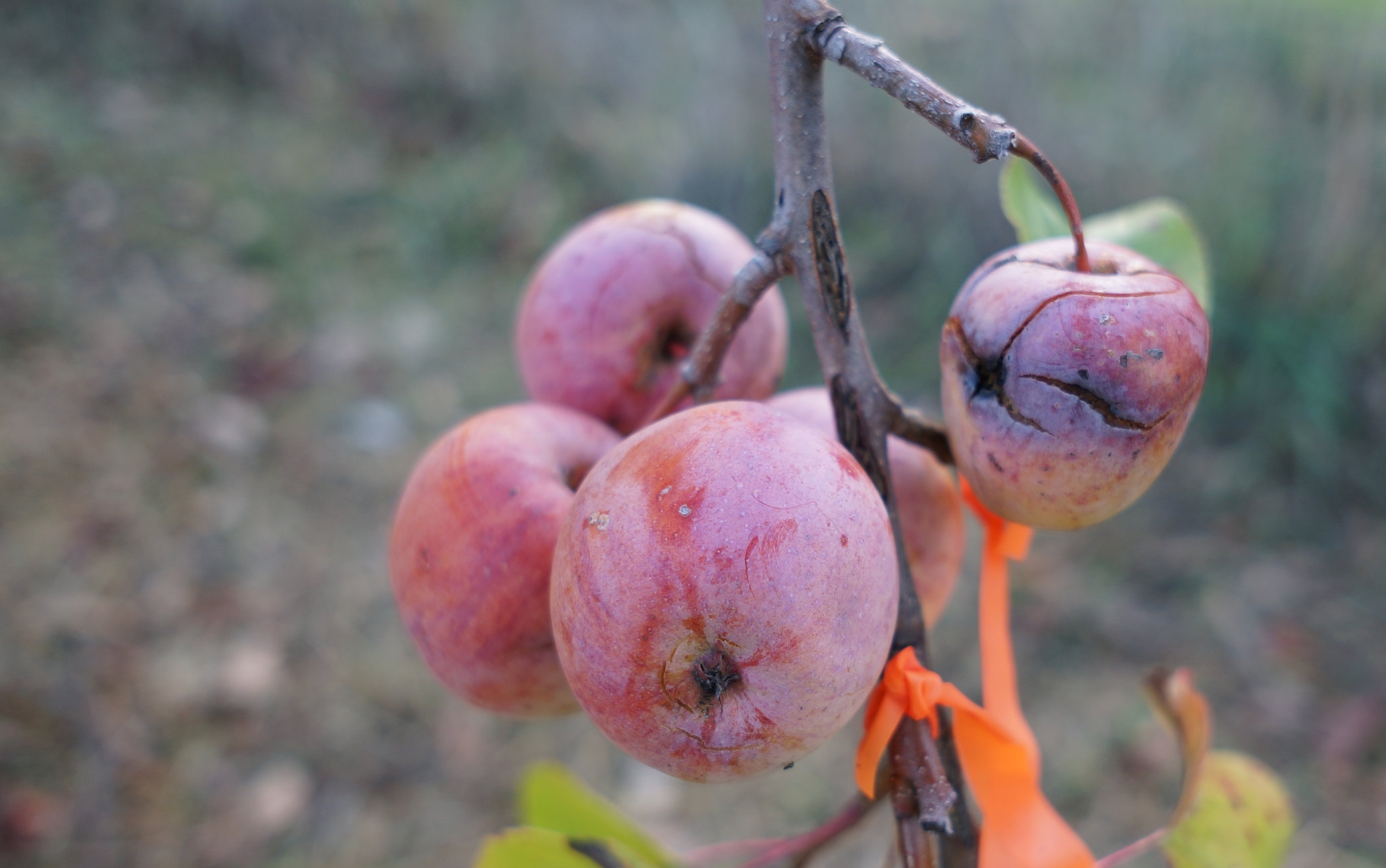Deutchland’s Apfelsorten, DR. TH. Engelbrecht, 1889
Golden Harvey auch llranily Apple
Gestalt 54: 47 — 48, stark uligestumpft liinfrliclirund, raittelUancli. Hälften gleich.
Kelch offen, gross, gelblich, locker behaart. Blättchen ziemlich schmal, am Grunde getrennt, lang, aufrecht, nach aussen gebogen, fein gespitzt. Einsenk. ziemlich tief, weit, etwas ausgeschweift, eben, yuersehn. rund.
Stiel holzig, dünn, etwa IHtnm 1., dunkelbraun, kahl. Höhle massig tief, weit, eben, zuweilen mit Fleisehwulst, brotizefarben berostet.
Schule glatt bis fein rauh, ziemlich glänzend, in der Zeitigung goldgelb, sonnenw. rariuoisin, fast blutrolh überzogen, nicht oder nicht deutlich ge.streift. l’unkte zahlreich, niitteldick bis dick, auch eckig, braun. Anflüge bräunlich gelben Kostes nicht selten. Hie Frucht welkt in einigen Gegenden zienilich stark, (ieruch fehlt. >
Kernhaus 33:27, zwiebelförm. Kammern etwas tiefsitzend 10:14, stielw. stumpf gespitzt, kelchw. abgerundet, fast glattwandig, geräumig, ge- schlossen oder sehr wenig offen. Achsenh. schmal. Kerne meistens zu 2, mittelgross, vollkommen, eiförmig, gespitzt, ka.stanienbraun.
Kelchböhle triehterfVirmig, mit oft recht flacher Mündung, '/j zur Achsenh. Pistille ziemlich kurz verwachsen, am Grunde fast kahl, in der Theilung etwas behaart. Staubfiiilen wenig über mittelständig.
Fleiscb gelblichweiss , fein, fest selbst gegen Ende der Zeitigung, saftig, edel rcinettenartig gewürzt, etwas vorherrschend sehr angenehm weinig, nicht viel weniger süss.
Hie Früchte erhielt ich von Kolbe -Langwarden (Oldenburg) und als Brandy von Hoesch-Hüren, sie waren getrocknet sehr schmackhaft.
Htt H iwOflTuiifcl (Kog.) Almost OOl + t, January to May.
(THE WACKY DIGITAL TRANSLATION BELOW. GERMANS, FEEL FREE TO SEND ME A BETTER TRANSLATION!)
Golden Harvey also Brandy Apple
Figure 54: 47-48, severely uli-stomped liinfrliclund, raittelUancli. halves equal.
Goblet open, large, yellowish, loosely hairy. Leaves quite narrow, on Basically separate, long, upright, bent outward, finely pointed. The immerse. pretty deep, wide, a bit out of sorts, even, yuersehn. round.
Stalk woody, thin, about 1st grade, dark brown, bare. Cave massively deep, wide, even, sometimes with Fleisehwulst, rusted britzizefarben.
Skin smooth to fine rough, rather shiny, golden yellow in the evening, Solstice. rariuoisin, almost blood red coated, not or not clear striped. There are numerous, thin to thick, even angular, brown. Approaches brownish yellow Kostes not infrequently. The fruit withers in in some areas it is strong, (it is missing
Kernhaus 33:27, bulbous. Chambers a bit deep sitting 10:14, stielw. dull tipped, kelchw. rounded, almost smooth-walled, spacious, closed or very little open. Achsenh. narrow. Cores mostly to 2, medium-sized, perfect, ovate, pointed, ka.stanienbraun.
Kelchböhle TriehterfVirmig, with often quite flat mouth, '/ j zum Achsenh. Pistachio rather short, at the base almost bald, in division a bit hairy. Dusting a little above medium.
Fleischb yellowish white, fine, firm even towards the end of the Zeitigung, juicy, noble rincette-like spiced, slightly predominantly very pleasantly vinous, not much less cute.
Hie fruits I received from Kolbe -Langwarden (Oldenburg) and as Brandy from Hoesch-Hüren, they were dried very tasty.
https://archive.org/stream/bub_gb_tR4EMgEACAAJ#page/n619/search/%22golden+harvey%22











































